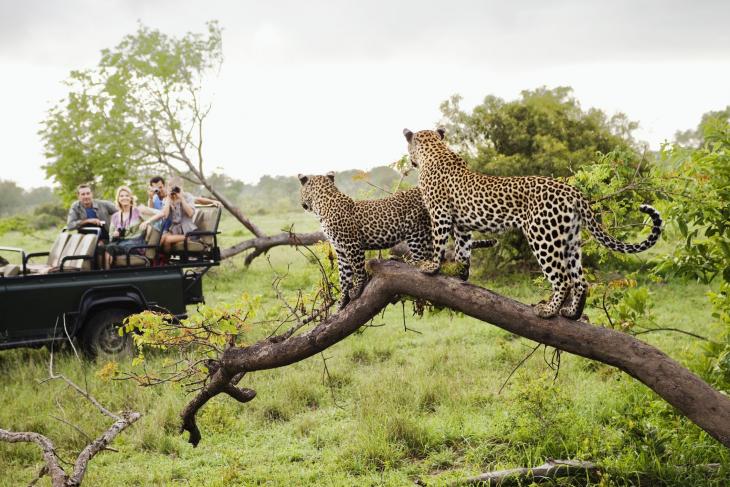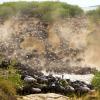8 Things to Consider for a Safari in Africa - Tanzania, Kenya, South Africa
African Safaris are a great way to disconnect from stressful city life, away from work and responsibilities! This year you’ve decided to make it happen: you’re taking your suitcase, a pair of sunglasses and binoculars to explore some of Africa’s best game spotting destinations! GREAT IDEA! Believe me you have made the right choice! If you’re looking for unforgettable and unique moments, relaxing and enriching experiences…just go for it!
1. What are you looking for?
What is it that you are truly looking for? Are you more of an animal freak (just like me) or a bird enthusiast? What would the purpose of your holiday be? To discover what mother nature has to offer, to relax around the pool, or to benefit from a magnificent sun downer cruise on Lake Kariba? Perhaps a combination of all of the above would suit you best…? Pick your wants, be specific…there are plenty of specialist safaris out there!
Once you’re clear on what your desires are, you can then choose the right destination! This is absolutely essential! Indeed, various locations will have different facilities and distinct things to offer! Some will not necessarily be in a rich wildlife area but might have other advantages like a stunning location, exciting activities, walking trails, etc… .
In other words, do your homework, pick up your bags and jump on a plane ;)
2. Where to go
Africa is a huge continent with an unlimited amount of choice destination wise. While it is true that Western Africa has quite a few options available, the area I know best is concentrated in Eastern and Southern Africa, and is renowned for its abundant wildlife. It is an extraordinary heaven for outdoors adventure - perhaps THE best on Earth!
Here are some of the countries that I definitely recommend if you are in love with the bush:
- Tanzania.
- Kenya.
- Uganda.
3. When to go
The best time of the year for safaris occurs during the dry season months. Indeed, in the rainy season water and food are plentiful. Animals tend to be more dispersed throughout the parks/game reserves. Also, grass is much longer in some areas, making it more difficult to spot them. In comparison, in the dry season permanent water holes attract a vast abundance of wildlife!
For East African countries such as Kenya and Tanzania, ideal times for game viewing include the periods of December to March, and from June to late September/early October. It is during the latest months of the year that one can experience the Great Annual Wildebeest Migration, where almost two million animals gather and move together across the plains of the Serengeti and Masai Mara National Parks! I’ve had the chance to watch it…it’s a once in a lifetime experience…absolutely breathtaking!
4. Visa/Vaccinations
Most countries require a single-entry visa. I know that in Kenya it costs about $50 and Tanzania $100. So make sure you visit local embassies, and please do a little research before leaving your country.
As far as vaccinations are concerned, requirements vary from country to country. If I were you I’d ask a doctor for adequate information. Here’s a list of some of the inoculations that are highly recommended:
o Yellow fever
o Diphtheria
o Typhoid
o Hepatitis A
Last thing: make sure you ALWAYS have your medical insurance policy to cover possible (yet very unlikely ;)) emergencies!
5. What to Take With You
Here’s my ‘take away’ list:
- A suitcase (ha ha very funny Michael).
- Your passport and certificate of vaccination (oops…almost forgot the plane tickets).
- A hat (a Rogue safari hat for the ultimate safari freak ;)), sunscreen lotion and a pair of sunglasses.
- Mosquito repellent (very important). In some cases, you may be required to take prescription medicine to prevent malaria (i.e. Malarone or Lariam).
- Good binoculars to spot the animals (I recommend 10*50 for best viewing).
- A camera of course (100-300 mm lens ideally; 35 mm for portraits, landscapes, etc.).
- A few jerseys
- A torch to prevent lucky/unlucky encounters at night
- A Swiss Army Knife (be careful not to carry it in your hand luggage). It can be very handy in the bush, as a bottle opener or to cut things
VERY IMPORTANT: Oh yes, don’t forget your “eagle eyes” to spot what mother nature has to unveil to you, and your good mood as always ;)! And remember to stay silent…you may annoy or scare the animals away!
6. Choosing your Activities
Lodges/camps habitually have three main activities: game drives, walks and night drives (not everywhere though). Some may also propose sun downer cruises! Drives are 2-3 hours long (depending on the formula)! Early mornings and late afternoons are best as it is cooler, thus providing better conditions for optimal game viewing. Otherwise, animals tend to rest under a tree or hide in the thickets, away from the scorching sun! A good nap is usually the plan during that part of the day…or perhaps a plunge in the swimming pool?! Up to you really…
My personal favourite is the night drive formula, where you get to see nocturnal animals such as the elusive leopard, African genets and civets, laughing hyenas, porcupines and way more!!! It’s really a cool experience, especially when they let you use the spotlight to scan through the night, looking for every sign or movement: a shiny eye, an unusual noise…detective work at its best!
Also very interesting. An armed guide walks you through the bush to experience another side of nature. Here you get to learn about animal tracks, droppings, and both the fauna and flora (especially trees and their values) of the African savanna. While the wildlife experience might not be as productive in terms of animal sightings (they tend to run away as soon as they see you), the learning experience and birding side of things make it totally worth it! It just has to be done at least once in your life :).
Truly amazing for close encounters with hippos, crocodiles, or to have the opportunity to view animals that come down by the river to drink. Amazing photo shots to be taken, specifically with the rich aquatic bird life that thrives around the riverine area!
7. Tell your Guide what you’re Looking For
In most instances, professional guides will ask you what your main interests are before taking you on a drive or walk! If not make sure you tell them what you’re dying to find! Whether you’re going for The Big 5, a specific animal or bird species…they’ll be more than happy to fulfill your desires!
However, notice that national parks are not zoos - in other words, you never know in advance what you’re going to see! In my opinion, it’s the exciting part of safaris! Some days are prolific, while others are more disappointing! But often it is when you least expect it that you’re rewarded the most! Never get discouraged! Have faith and odds will eventually turn in your favour!
8. Where to Look for Animals
While there are no definite locations for specific animals, it is possible nevertheless to associate them with specific biomes. For instance grazers live in grasslands, browsers woodlands and predators in open savannas. If you’re searching for kudu, you’re very unlikely going to find them in open regions. This type of antelope is principally found in bushy areas where food (mainly leaves) is plentiful for them. Similarly, giraffes love acacia terr




